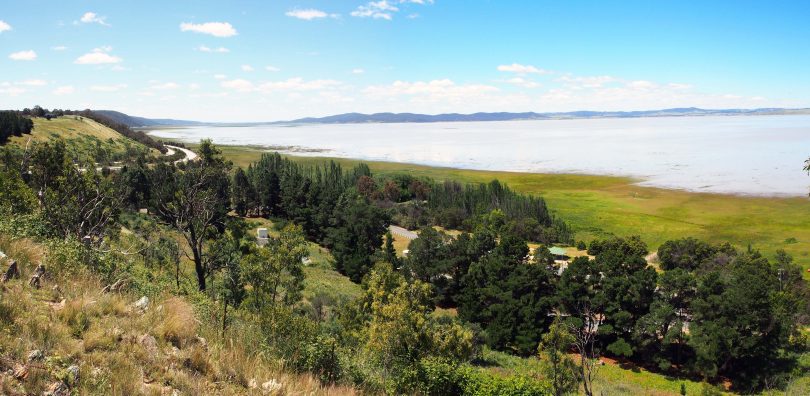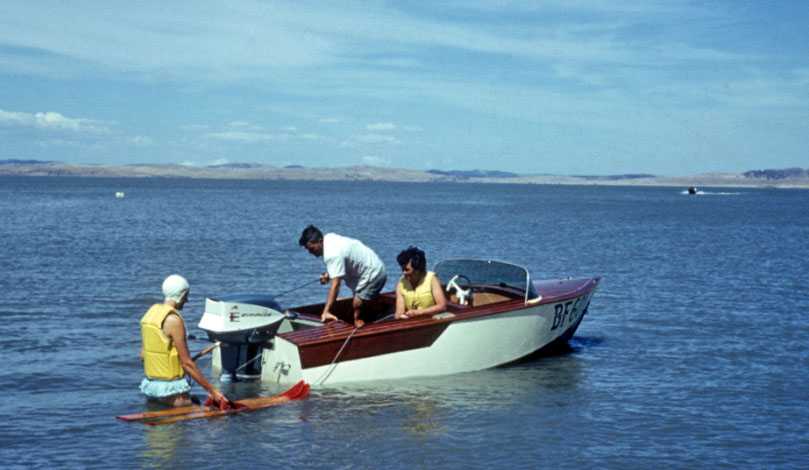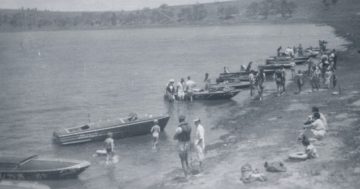
A year of heavy rainfall has Lake George looking very full of water, a far cry from the dry state it was in during the drought of 2017-2019. Photo: Professor Bradley Pillans.
A full Lake George is an exceptional sight.
Following heavy rainfall throughout 2021, the lake, which is situated 40km northeast of Canberra, is beginning to look like a full body of water again after the 2017-2019 drought left it barren and lifeless.
Numerous pictures are circulating online of people admiring Lake George in all its glory, but is it here to stay or should we expect these continued fluctuations as our climate grows more extreme at either end of the scale?
Professor Bradley Pillans from the ANU Research School of Earth Sciences has been exploring the history of Lake George in recent times. He says the lake is now as full as its been since October 2017.
“It comes and goes on a decadal basis,” he says.
“In the 1990s, it was fuller than it is now, but it didn’t last as long as that period in the 1950s and 1960s when we had a lot of wet years in southeast Australia.
“It all depends on the rain, and you need a series of wet years to keep the lake up and the 1950s was like that.
“We’ve had a couple of wet years now – last year and this year – but it needs to keep up. There’s every chance the lake will get as deep as it was in the 1950s and 1960s again.”
In the late 1950s and early 1960s, Lake George was around four metres deep, with the volume of water comparable to Sydney Harbour at around 500 gigalitres.
Professor Pillans recalls activities on the lake in 1964 such as sailing by Canberra Sailing Club, speedboats and water skiing.

Speedboats were once a common sight at Lake George. This photo was taken in 1964. Photo: Bob Pillans.
Currently, the level at Lake George is around 1.5 metres deep, or about 100 gigalitres and only 20 per cent of Sydney Harbour.
“It’s a big lake in area, but it’s not very deep,” says Professor Pillans. “Even though it looks like there is a lot of water there, it’s very shallow.”
Long-time Canberrans would remember the water lapping up to the Federal Highway in the 1990s. Professor Pillans says that is a genuine possibility of occurring again.
“The lake has come up quite a lot in the past few months and they’re predicting a wetter than normal summer,” he says.
“If we get another wet year next year, I’d say there’s every chance we’ll have the water lapping up to the edge of the road like it did in the 1990s.”
What is unlikely to ever return is the 37-metres deep Lake George from thousands of years ago, much to the delight of the communities in Bungendore and Collector.
“That [37 metres deep] means the water would’ve lapped up to Gearys Gap where the lookout is on the highway and almost spilled over through the low point of the ranges there,” says Professor Pillans.
“Bungendore and Collector would’ve been underwater. Lake George would’ve been huge, absolutely spectacular and permanent because the rainfall was much higher.”
According to Professor Pillans, while a La Niña has been declared in the Pacific Ocean, it would take longer than a few wet years for the sustained future of Lake George to be secured. The fluctuations it has seen in recent years are likely to be ongoing
“You’re relying on the rainfall being relatively high during a long period of time,” he says. “You’d want to have a run of La Niñas and I can’t say whether that will happen or not.
“You’ve got to remember the weather is getting warmer as well and the summers are hot. It’s the hot summers that really kill the water in Lake George because evaporation is much higher.”
Original Article published by Max O’Driscoll on Riotact.








